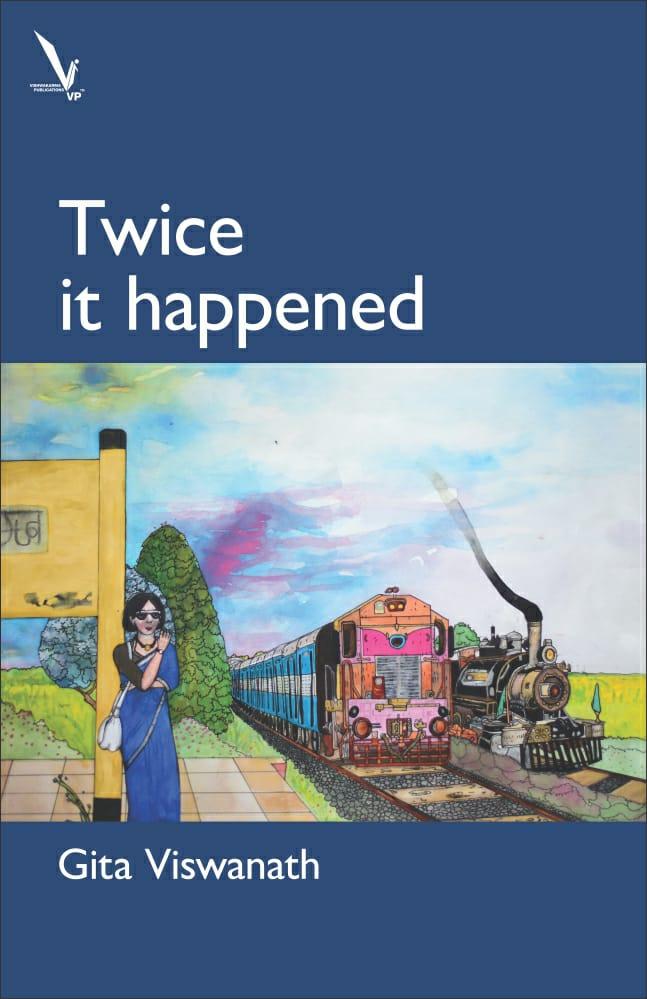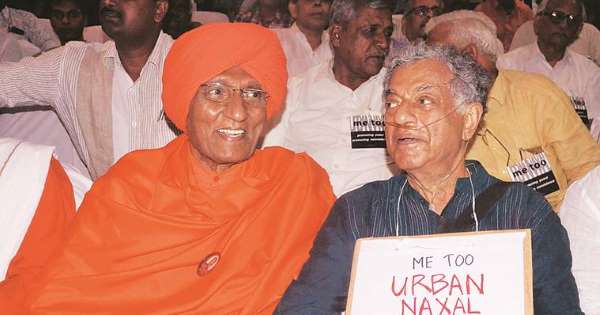Quick Reads
Book Review: Twice it happened
The novel suggests that women do have many stories to tell but they [had to], out of no choice, hide them.

Of someone else's secrets, I think we all like, mostly never heard secrets to be heard. Be it apocryphal indistinct voices or leaked emails, you‟d halt or pause and lend your ears if interesting would ask for more. The new novel, Twice it happened, tells the fascinating stories of two women across generations who carry the burden of the secrets.
An excerpt from Chitra‟s emotional epistle to Jyothi reads,
Women live with secrets…like hiding currency notes between piles of clothes and try to forget about them. Or like Mummy who would hide her gold chain and bangles in dabbas of wheat flour to save them
The novel truly suggests that the women do have many stories to tell but they [had to], out of no choice, hide them or rather bury them deep in the hearts. Never to narrate, but further, she writes, "In a way, we're all Kunti's daughters! We struggle to live with secrets and one fine day we just have to blurt them out." The phrase 'Kunti's daughters' symbolically suggests the stories of Chitra, Nagamaa and Shantha, who have due to societal pressure locked up their secrets.
Gita Viswanath, an author who interestingly while writing makes use of the traditional forms and her individual talent to narrate a chain of diverse events. She smoothly unfolds several stories. The idea of storytelling is somewhere at the core of the novel. It can truly be said that Gita Viswanath, as Savi Sharma writes, “Everyone has a story to tell. Everyone is a writer, some are written in the books and some are confined to hearts,” smoothly tells the painful stories, in fact, secrets that were confined to the hearts. She with her outstanding craft opens up several confined hearts.
The novel, Twice it happened, begins with Jyothi (not a protagonist but a focal character or largely opening narrator), who is a professor at a college, her aunt Nagamma while dying promises her, ‟I'll tell you my story on this journey.” And then, the novel 'Twice it happened' sets on the surprisingly parallel tracks, first, of Nagamma and later of Chitra. The setting of the novel, in a modern-day world, is like a moving train, narrating its memorable halts. The origin is, of course, Gajulupur, named after a famous bangle-seller in the village.
Like the Mahabharata, Twice it happened tells a story, the story of many or rather several stories of several female characters perfectly interwoven through the various narrative techniques, the story of the undying memories and the secrets of the colourful female characters that are round, in E.M. Forster's terminology, extremely realistic, behaving and speaking in a real-life manner. Unlike the men from the novel, the women characters have several stories to pass to the next generation. Although there are several male characters in the novel, they completely seem to be flat who lack a complex and realistic personality.
Unlike the stock characters (Shankar andPedappa), the characters of Sridhar and Aditya develop the plot but simply lack the complexity and reality that the story requires. They're simply less attractive. Or belittled! The female characters, on the other hand, are the center. They're marvelous. They speak their minds. They're superbly imagined.
In Twice it happened, everyone has a story or many stories to tell, but waits for the right time and right way. Chitra, a round character, only finds it easy through the modern way of expression. Her emails to Jyothi open up her painful yet colorful story. The several events that occurred in her journey kept her changing and developing. Chitra, I would say, captivates. She is a woman of her rule. She stands with what she believes in, but do others? She is like a species. Her story transcends from a person to the species. Nagamma after her death reveals her own secrets to her disenchanted niece Jyothi through several dreams, distinct voices and often visitations. Nagamma, while telling her Apocrypha, says, "grief does not necessarily bind; it can divide too." In the case of Jyothi and Chitra, the grief literally binds them like never before.
The three principal women characters, Jyothi, Nagamma, and Chitra, completely captivate and engross the reader, in the kapi mushti. The novel has covered a long time span. Almost three generations. Of Nagamma, of Jyothi and Chitra, and of their daughters. Gita Viswanath sometime ontologically and sometimes unrealistically explores the core themes like love, life, family, death, and after-life too. When she eyes at death, she does it ontologically but when she imagines the after-life, she does it ironically.
Chitra also figures out the rupture in love and finds solace in the escape. The family saga, core of any Indian work, is also the foundation of this novel. It strongly attempts to criticize the patriarchy. What happens next to these women? That's a curiosity that rovers in the reader‟s mind.
Narrative Technique:
Twice it happened doesn't follow any particular narrative style as such, rather it brings together various narrative forms to tell the story shockingly yet perfectly. It successfully tells us the secrets and memories. As Nagamma organically says, "So, what if I'm telling you a real-life story; I still have to imagine some parts. Or else would you be interested in listening to me?" Nagamma who is dead (a ghost) tactfully suspends our disbelief. Like Hamlet, the ghost of Nagamma guides us. In literary works, suspension of disbelief is often an essential element. The crafty use of dreams, distinct voices, visitations, letters and emails have defamiliarized the memories, secrets and stories. Gita Viswanath has brilliantly concocted two different forms. It is partly epistolary and therefore adds greater realism to the story. It is also partly apocryphal, stories hardly to be realistic. The narrative techniques implied by the novelist are quite commendable. To achieve literary effects like a narrative poem, the novelist has also applied a number of literary devices. The handy use of simile and metaphor deserves a special mention.
The way the story is told, it can fairly be said that Jyothi is supposedly an author of the book. Her opening narration of the conclusion, "Soon, there'll be readers for this story. That's when I, the niece, the cousin, the scribe, will need to disappear from the scene…" allows me to speculate. If the speculation, I make, is true then I'd like to rest my case Twice it happened is novel that carries a ton from author's personal experience, memories and diverse surroundings. Yes, it is, indeed, an autobiographical fiction. But having said so, it can seriously be viewed as a microcosm of India.
Let me dare say that Twice it happened sets in Pan-India and is essentially Indian fiction that talks about Indians inside out. She has minutely detailed the railways, army jargons, the arrival of electricity, the Indian academia and so on and so forth. This is a type of partly epistolary fiction that I genuinely find very interesting. This is a complex yet stimulating novel. In the near or distant future, I hope it would certainly make its mark in the category of the selected Indian Women fiction.

Title: Twice it happened
Author: Gita Viswanath
Publication: Vishwakarma Publications, Pune.
Price: Rs. 255
Pages: 204





